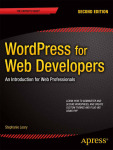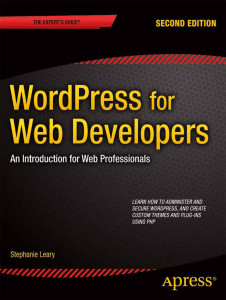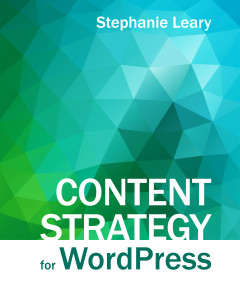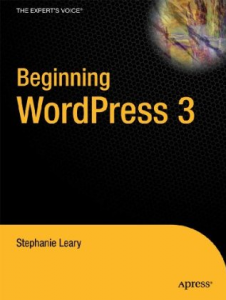
 WordPress for Web Developers is out today! This is the second, much-revised and updated edition of Beginning WordPress 3, with a more accurate title. Everything’s been updated for WordPress 3.6, and the chapters have been reorganized into three distinct sections that should be a little easier to follow.
WordPress for Web Developers is out today! This is the second, much-revised and updated edition of Beginning WordPress 3, with a more accurate title. Everything’s been updated for WordPress 3.6, and the chapters have been reorganized into three distinct sections that should be a little easier to follow.
You can order from Amazon and Barnes & Noble. The various ebook formats don’t seem to be posted in their respective stores yet, but will be available soon. In the meantime, you can get the ebooks directly from the publisher, Apress.
Want a short sample? Download Chapter 4, Working with Content (PDF, 6.7MB).
I’ll post some more excerpts from the book later this week (probably from my seat at WordCamp Chicago). I’ll also give away a few copies of the book, so stay tuned!
Want to see what else is inside? Here’s the table of contents:
Part 1: Installing and Using WordPress
(Non-technical)
- Introduction
- Why WP?
- WP’s CMS capabilities
- Major sites using WP
- Installation
- Requirements
- Troubleshooting
- Settings
- Reading settings
- Discussion: comments and trackbacks
- Permalinks and short links
- Working with content
- Posts and pages
- Basic fields
- Custom fields
- Working with content from Office files
- Quick Edit
- Bulk Edit
- Screen options
- Media
- Feeds
- Posts and pages
- Working with themes
- Using the customizer
- Using widgets
- Using the menu manager
- Finding and evaluating themes
- Working with plugins
- Installing
- Finding and evaluating plugins
- Troubleshooting plugins
- Working with users
- Profiles
- Roles
- Permissions
- Workflow
Part 2: WordPress and Your Server
(Intermediate: involves editing configuration files and working with host’s administration tools.)
- Setting up the network (multisite)
- Domain mapping
- Performance and Security
- SSL
- File permissions
- Changing file locations
- Importing and migrating
- Moving to a new server or domain
- Tips for happy importing
- Importing from other CMSs
- Importing from static files
- Post-migration checklist
Part 3: Beginning WordPress Development
(Advanced: Familiarity with PHP arrays, if/else statements, loops, and function syntax required. Familiarity with objects and classes helpful, but not required.)
- Common Development Concepts
- Hooks
- Filters
- Actions
- Settings
- Writing secure themes and plugins
- Validating input
- Escaping output
- Checking capabilities
- Checking referrers
- Debugging
- Debug mode
- Helpful plugins
- Developer resources
- Hooks
- Creating a custom theme
- Theme file hierarchy and context
- Turning plain HTML into a theme
- The Loop
- Basic theme functions
- Setting up widget areas
- Enabling post thumbnails
- Changing excerpt length and ellipsis
- Advanced theme functions
- Modifying the Loop
- Multiple Loops
- Getting post information outside the Loop
- Creating theme customizer settings
- Creating Child themes
- Creating theme frameworks
- Responsive design issues in themes
- Creating plugins
- Creating a template tag
- Creating a shortcode
- Creating widgets
- Caching widget output using transients
- Dashboard widgets
- Adding a settings screen
- Other APIs
- Custom post types, taxonomies, and fields
- Post types
- Taxonomies
- Fields
- Appendix 1: Plugin Index
- Appendix 2: Community resources
- Documentation
- Support
- Discussion
- News
- Events
In addition to Chapter 4, you can download:
- the theme from Chapter 12, including both a traditional theme options screen and controls for the new theme customizer
- the user directory plugin from Chapter 13, which demonstrates template tags, sidebar widgets, dashboard widgets, shortcodes, and custom user contact fields
- the course listing plugin from Chapter 14, demonstrating post types, taxonomies, and fields, with some cool features like sortable columns for the Edit screens
I hope you enjoy the book!
If you’re a teacher or a writer for a WordPress-focused news site, and you’d like a review copy of the book, please let me know and I’ll hook you up with my publicist at Apress.




Leave a Reply